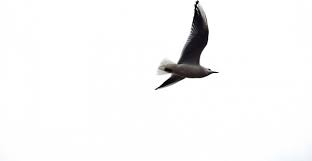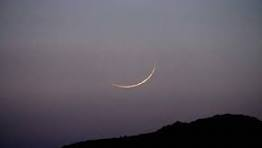
http://thewirehindi.com/142569/remembering-malika-e-tarannum-noorjehan/
About Noor Jehan:
Noor Jehan/Malika-e-Tarannum (the queen of melody), was a playback singer and actress, with a career spanning across six decades, (1930-1990). She was renowned as one of the greatest and most influential singers of all time throughout South Asia and had a command of Hindustani classical music as well as other music genres.
She said, “My life has been and will be devoted to music until my last breath. I live to sing, and singing is my life. For me, fame and glamour are secondary. The appreciation of my listeners is my true reward.”
Born as Allah Wasai in Kasur, she began singing at the age of five, showed a keen interest in a range of styles, including traditional folk and popular theatre. At this age, Noor Jehan would copy Akhtari Bai Faizabadi and Mukhtar Begum after listening to their records. She received, early training in classical singing under Ustad Bade Ghulam Ali Khan, of Patiala Gharana. At the age of nine, Noor Jehan drew the attention of Punjabi musician Ghulam Ahmed Chishti, who not only introduced her to stage, but also composed, ghazals, naat and folk songs and was her mentor in the initial phase.
After moving to Calcutta, in early 1930’s, Mukhtar Begum encouraged her to join film, including her future husband, Agha Hashar Kashmiri, who owned Maidan theatre.
She went on to act, in Punjabi films including Pind di Kuri(1935), Missar Ka Sitara (1936), Heer-Sayyal (1937), Gul Bakawli (1939), Khandaan (1942), Naukar (1943), Duhai (1943), Dost (1944). From 1945 to 1947 some of her films included Badi Maa(1945), Zeenat(1945), Gaon ki Gori(1945), Anmol Ghadi(1946) and Jugnu(1947).
In 1947, Rizvi and Jehan left Bombay. Her decision to migrate to Lahore in 1947 in her words, were, “Jahan paida hui wahan hi jaoongi.” I will only go where I was born.
Lahore had been a prominent filmmaking centre before 1947, but its major studios had been burnt down during the Partition riots, and local filmmakers lacked even the basic equipment to make movies. This was one of the reasons, why it took Noor Jehan until 1951 to appear in a movie in Pakistan. Jehan’s husband, filmmaker, Syed Shaukat Hussain Rizvi, who had directed her in many of her hits, managed to get the old Shorey Studios allotted to him and Noor Jehan with a claim against the property he had left behind in Uttar Pradesh. The studio was rechristened ”Shahnoor”, and its first production was to have been the Urdu-language movie Nagina, starring Noor Jehan. That a Punjabi film had better commercial prospects, Rizvi shelved Nagina and launched Chan Wey. This was followed by Dupetta (1952).
Some of Noor Jehan’s best singing has always been in her native language, Punjabi. Her ability to enunciate with crystalline clarity and her skill in evoking the right emotion, especially in her sad songs, is what made her singing so popular. This was evident in the Punjabi offering, Patey Khan (1955).
In 1956, Noor Jehan teamed up for the first time with two of the biggest legends of Pakistani film music – GA Chishti for Lakht-e-Jigar, and Khwaja Khursheed Anwar for Intezar. While , the film got her the President’s Award for Best Singer. Lata Mangeshkar, commented on Jehan’s vocal range, that Jehan could sing as low and as high as she wanted, and that the quality of her voice always remained the same. She went on to say, that Intezar had one of her favourite Pakistani music scores.
Koel (1959) was Noor Jehan’s last big success as an actress. In 1959, Noor Jehan married for the second time. Her second husband, upcoming actor Ejaz Durrani, was nine years younger than she was. Since Durrani didn’t want Noor Jehan to continue acting, she made her last movie appearance in Ghalib (1961).
Her last film as an actress/singer was Mirza Ghalib (1961). Jehan bade farewell to film acting in 1963, in Baaji, after a career of 33 years (1930–1963). Jehan made 14 films in Pakistan, ten in Urdu and four in Punjabi as a film actress.
With Salma (1960), Noor Jehan began a new career as a playback singer. She had previously recorded for Patey Khan (1955), Jan-e-Bahar (1958). It was however, Rashid Attre who composed some of Noor Jehan’s best tracks in her early days as a playback singer in films like Mehboob (1962), Mosseqar (1962) and Qaidi (1962).
Qaidi, used one of Faiz Ahmed Faiz’s best-known poems, Mujhse Pehlisi Mohabbat Mere Mehboob Na Maang, the basic tune was composed by Noor Jehan, and Faiz was reportedly so taken by Noor Jehan’s rendering of his words that he symbolically gifted her the poem; In fact, when Faiz, later was asked to recite this verse, the poet replied, “Bhai, ab woh geet mera kahan raha? Noor Jehan ka ho gaya.” In 1982, when Noor Jehan came to India for the first time since she’d left to participate in an event titled Mortal Men Immortal Melodies to celebrate 50 years of the Indian talkies, Mujhse Pehlisi Mohabbat was among the three songs she chose to perform. Her rendition is also a unique example of tarranum, reciting poetry.
Her life also inspired the leading Urdu writer Manto to write a sketch, Noor Jehan, Surooray Jehan, about her.
Noor Jehan’s Lakhon Mein Aik, was a masterpiece, too. Noor Jehan even sang a bhajan, Man Mandir Ke Devta, which was banned by Radio Pakistan. By the 1970s, Punjabi films outnumbered Urdu productions in Pakistan, and Noor Jehan’s vibrant voice featured in the best-known ones, including Heer Ranjha (1970). By the late 1970s and 1980s, Pakistani cinema, largely Punjabi action films, saw relatively crass songs sung by Noor Jehan, and perhaps, were a disappointing phase of her career. This included Sher Khan (1981), and Sakhi Badshah (1996).
Whether she lost out by opting to migrate to Pakistan, and limiting herself to Urdu Ghazal and Punjabi tunes, as being in India would have meant, singing for variety of music, across Hindi film music industry is a debatable question but there is ”no denying the fact that Noor Jehan shaped Pakistani film music the way Lata Mangeshkar did Hindi film music”.
Outside Pakistan, Noor Jehan endeared herself to music lovers in India, the gulf countries and even in the far east. Yet she remained modest about her achievements. “We singers are nothing,” she once said. “We put the ready-made dish before you through the medium of our voice.“
The distinguished music director Naushad, meanwhile, maintained that Noor Jehan was a better singer than Lata Mangeshkar. Pleasantly, both the singers remained close friends, mutual admirers, corresponding across border till the former’s death.
In 2000, at her death, Javed Akhtar said that, “In the worst conditions of our relations with Pakistan in 53 years in a very hostile atmosphere our cultural heritage has been a common bridge. Noor Jehan was one such durable bridge, my fear is that her death may have shaken it”.
Her music also provided a common bridge and a platform for the shared cultural heritage of the divided states of India and Pakistan. One of her great hits, Awaz Dey Kahan Hey, still prefaces one of All India Radio’s popular programmes.
Rare Interview of Madame,
Also see,
https://www.theguardian.com/news/2001/jan/05/guardianobituaries.filmnews




Leave a comment